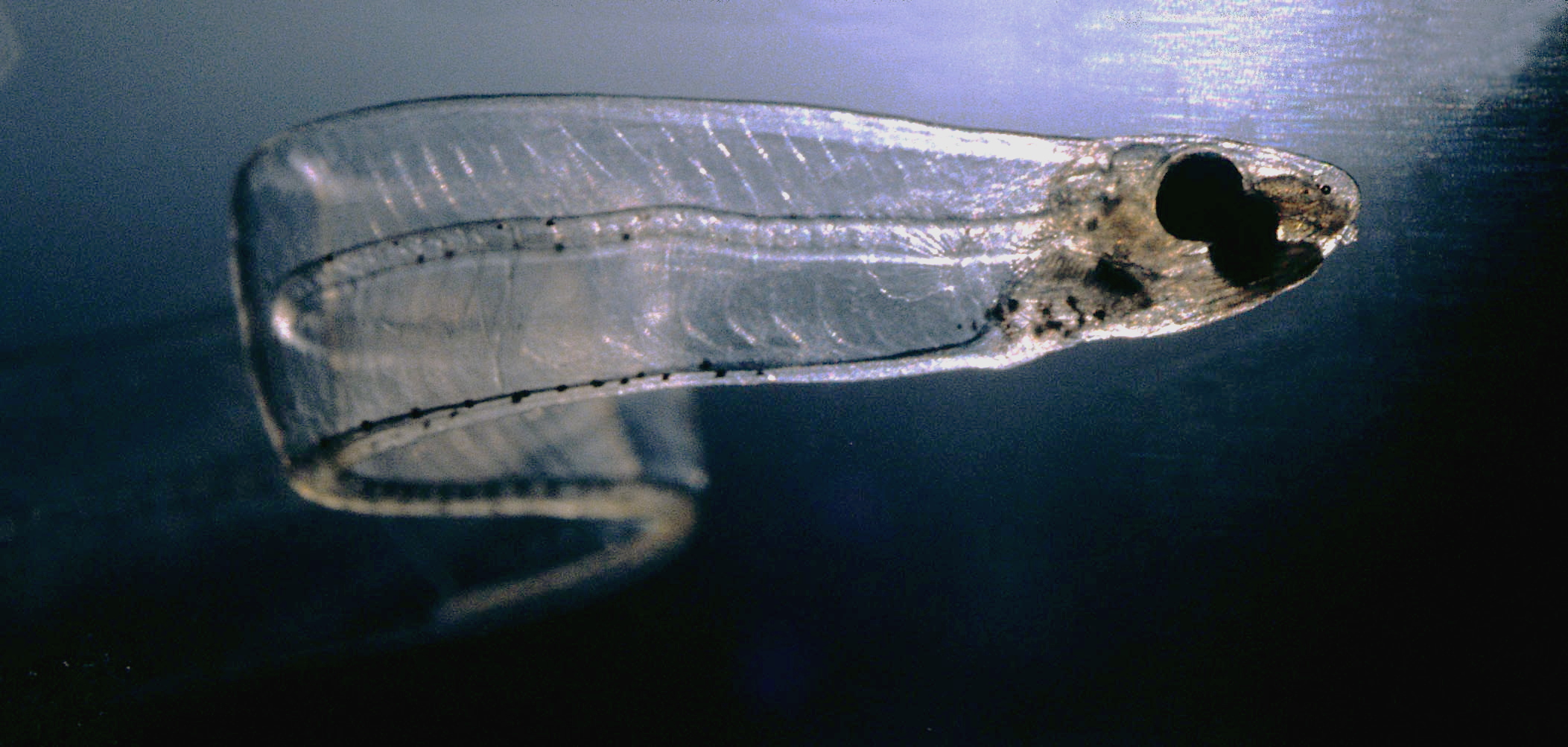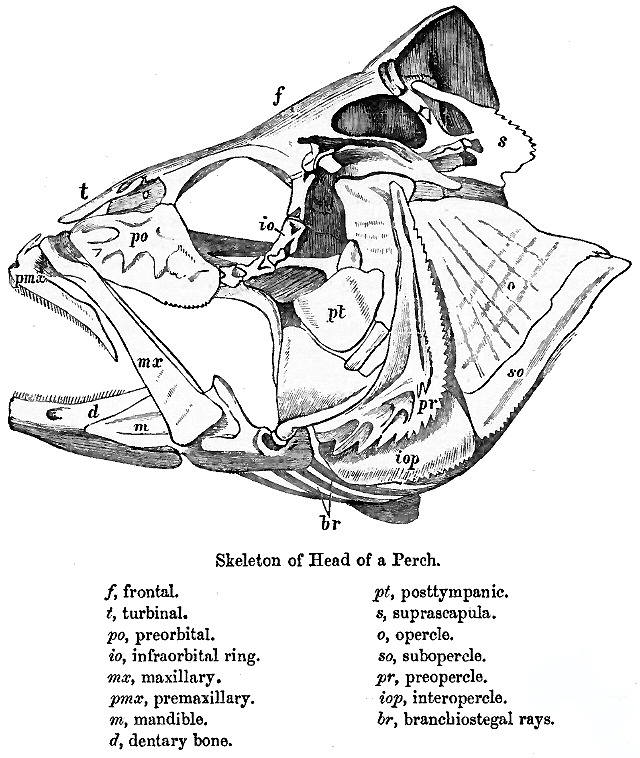|
Elopomorph
The superorder Elopomorpha contains a variety of types of fishes that range from typical silvery-colored species, such as the tarpons and ladyfishes of the Elopiformes and the bonefishes of the Albuliformes, to the long and slender, smooth-bodied eels of the Anguilliformes. The one characteristic uniting this group of fishes is they all have leptocephalus larvae, which are unique to the Elopomorpha. No other fishes have this type of larvae. Taxonomy The Elopomorpha are a group of Teleostei, teleost fishes and are separated into several orders. * Genus †''Bullichthys'' Mayrincka, Britob & Otero 2010 * Genus †''Eichstaettia'' Arratia 1987 * Genus †''Eoenchelys'' Lu 1994 * Genus †''Elopomorphorum'' Weiler ex Martin & Weiler 1954 [Otolith] * Order Elopiformes Gosline 1960 ** Family †Anaethaliidae Gaudant 1968 ** Suborder Elopoidei *** Family Protelopidae de Saint Seine 1949 *** Family Elopidae Bonaparte 1832/Valenciennes 1847 (tenpounders, ladyfishes) *** Family Megalopi ... [...More Info...] [...Related Items...] OR: [Wikipedia] [Google] [Baidu] |
Leptocephalus
Leptocephalus (meaning "slim head") is the flat and transparent larva of the eel, marine eels, and other members of the superorder Elopomorpha. This is one of the most diverse groups of teleosts, containing 801 species in 4 orders, 24 families, and 156 genera. This group is thought to have arisen in the Cretaceous period over 140 million years ago.Inuoe, Jun, M. Miya, et al. “Mitogenomic evidence for the monophyly of elopomorph fishes (Teleostei) and the evolutionary origin of the leptocephalus larva.” Molecular Phylogenetics and Evolution 32 (2004): 274-286. Web. 2 Nov. 2012. Fishes with a leptocephalus larval stage include the most familiar eels such as the conger, moray eel, and garden eel as well as members of the family Anguillidae, plus more than 10 other families of lesser-known types of marine eels. These are all true eels of the order Anguilliformes. Leptocephali of eight species of eels from the South Atlantic Ocean were described by Meyer-Rochow The fish ... [...More Info...] [...Related Items...] OR: [Wikipedia] [Google] [Baidu] |
Teleostei
Teleostei (; Greek ''teleios'' "complete" + ''osteon'' "bone"), members of which are known as teleosts ), is, by far, the largest infraclass in the class Actinopterygii, the ray-finned fishes, containing 96% of all extant species of fish. Teleosts are arranged into about 40 orders and 448 families. Over 26,000 species have been described. Teleosts range from giant oarfish measuring or more, and ocean sunfish weighing over , to the minute male anglerfish '' Photocorynus spiniceps'', just long. Including not only torpedo-shaped fish built for speed, teleosts can be flattened vertically or horizontally, be elongated cylinders or take specialised shapes as in anglerfish and seahorses. The difference between teleosts and other bony fish lies mainly in their jaw bones; teleosts have a movable premaxilla and corresponding modifications in the jaw musculature which make it possible for them to protrude their jaws outwards from the mouth. This is of great advantage, enabling them to ... [...More Info...] [...Related Items...] OR: [Wikipedia] [Google] [Baidu] |
Early Jurassic
The Early Jurassic Epoch (in chronostratigraphy corresponding to the Lower Jurassic Series) is the earliest of three epochs of the Jurassic Period. The Early Jurassic starts immediately after the Triassic-Jurassic extinction event, 201.3 Ma (million years ago), and ends at the start of the Middle Jurassic 174.1 Ma. Certain rocks of marine origin of this age in Europe are called "Lias" and that name was used for the period, as well, in 19th-century geology. In southern Germany rocks of this age are called Black Jurassic. Origin of the name Lias There are two possible origins for the name Lias: the first reason is it was taken by a geologist from an English quarryman's dialect pronunciation of the word "layers"; secondly, sloops from north Cornish ports such as Bude would sail across the Bristol Channel to the Vale of Glamorgan to load up with rock from coastal limestone quarries (lias limestone from South Wales was used throughout North Devon/North Cornwall as it conta ... [...More Info...] [...Related Items...] OR: [Wikipedia] [Google] [Baidu] |
Notacanthidae
Notacanthidae, the deep-sea spiny eels, are a family of fishes found worldwide below , and as deep as . The earliest known spiny eel is ''Pronotacanthus sahelalmae'', from the Santonian of what is now Lebanon. Their bodies are greatly elongated, though more tapered than in true eels. The caudal fin is small or nonexistent, while the anal fin is lengthy, as long as half of the total body length. They feed on animals attached to or living on the sea floor, such as sea anemones, echinoderms, molluscs, and worms. Although not true eels, these fish do have a similar leptocephalus larva A larva (; plural larvae ) is a distinct juvenile form many animals undergo before metamorphosis into adults. Animals with indirect development such as insects, amphibians, or cnidarians typically have a larval phase of their life cycle. Th ...l form. However, while the larvae of true eels are about 5–10% of the length of the adult, those of deep-sea spiny eels can grow considerably larger ... [...More Info...] [...Related Items...] OR: [Wikipedia] [Google] [Baidu] |
Halosauridae
Halosaurs are eel-shaped fishes found only at great ocean depths. As the family Halosauridae, halosaurs are one of two families within the order Notacanthiformes; the other being the deep-sea spiny eels, Notacanthidae. Halosaurs are thought to have a worldwide distribution, with some 17 species in three genera represented. Only a handful of specimens have been observed alive, all in chance encounters with Remotely operated underwater vehicles. The term "halosaur" refers to the type genus, '' Halosaurus'', which is a Greek compound word, ''hals'' meaning "sea" and ''sauros'' meaning "lizard". Halosaurs have a spotty fossil record, the oldest known genus being '' Echidnocephalus'' from the Late Cretaceous strata of Westphalia, Germany, and the second-oldest known genus, '' Laytonia'', from Miocene strata of California and Oregon. The fossil specimens already bear strong resemblance to the modern genera. The halosaurs' greatly elongated bodies end in whip-like tails; ... [...More Info...] [...Related Items...] OR: [Wikipedia] [Google] [Baidu] |
Bonefish
The bonefish (''Albula vulpes'') is the type species of the bonefish family (Albulidae), the only family in order Albuliformes. History Bonefish were once believed to be a single species with a global distribution, however 9 different species have since been identified. There are three identified species in the Atlantic and six in the Pacific. ''Albula vulpes'' is the largest and most widespread of the Atlantic species. Description The bonefish weighs up to and measures up to long. The color of bonefish can range from very silver sides and slight darker backs to olive green backs that blend to the silver side. Slight shading on the scales often leads to very soft subtle lines that run the flank of the fish from the gills to the tail. The bases of the pectoral fins are sometimes yellow. Bonefish can live up to 20 years and reach sexual maturity at 2–3 years of age (when they're over 17 inches (43.18 cm) long). Larvae drift for an average of 53 days. Juveniles often live ... [...More Info...] [...Related Items...] OR: [Wikipedia] [Google] [Baidu] |
Japanese Gissu
''Pterothrissus gissu'', also known as the Japanese gissu, is a species of ray-finned fish in the family (biology), family Albulidae. The Japanese gissu is a rare fish that is distributed in deep water off northwest Pacific Ocean. This fish is known to pass through a leptocephalus larval stage, but only metamorphosed (after reaching the fully grown stage) Biological specimen, specimens have been available.Tsukamoto, Y. (2002): Leptocephalus larvae of ''Pterothrissus gissu'' collected from the Kuroshio–Oyashio transition region of the western North Pacific, with comments on its metamorphosis. ''Ichthyological Research, 49 (3): 267-269.'' This species is the only member of its genus (biology), genus.Hidaka, K., Tsukamoto, Y. & Iwatsuki, Y. (2016): ''Nemoossis'', a new genus for the eastern Atlantic long-fin bonefish ''Pterothrissus belloci'' Cadenat 1937 and a redescription of ''P. gissu'' Hilgendorf 1877 from the northwestern Pacific. ''Ichthyological Research, 64 (1): 45–53.'' ... [...More Info...] [...Related Items...] OR: [Wikipedia] [Google] [Baidu] |
Albulidae
Albulidae is a family of fish, commonly known as the bonefishes, that are popular as game fish in Florida, select locations in the South Pacific and the Bahamas (where two bonefish are featured on the 10-cent coin) and elsewhere. The family is small, with 11 species in 3 genera.Hidaka, K., Tsukamoto, Y. & Iwatsuki, Y. (2016): ''Nemoossis'', a new genus for the eastern Atlantic long-fin bonefish ''Pterothrissus belloci'' Cadenat 1937 and a redescription of ''P. gissu'' Hilgendorf 1877 from the northwestern Pacific. ''Ichthyological Research, 64 (1): 45–53.'' Presently, the bonefishes are in their own order: Albuliformes . The families Halosauridae and Notacanthidae were previously classified in this order, but are now, according to FishBase, given their own order Notacanthiformes. The largest bonefish caught in the Western Hemisphere is a 16-pound, 3 ounce example caught off Islamorada, Florida, on March 19, 2007. Description ''Albula'' The bonefishes' closest relatives are the ... [...More Info...] [...Related Items...] OR: [Wikipedia] [Google] [Baidu] |
Tarpon
Tarpons are fish of the genus ''Megalops''. They are the only members of the family Megalopidae. Of the two species, one (''M. atlanticus'') is native to the Atlantic, and the other (''M. cyprinoides'') to the Indo-Pacific Oceans. Species and habitats The two species of tarpons are ''M. atlanticus'' ( Atlantic tarpon) and ''M. cyprinoides'' ( Indo-Pacific tarpon). ''M. atlanticus'' is found on the western Atlantic coast from Virginia to Brazil, throughout the Caribbean and the coast of the Gulf of Mexico. Tarpons are also found along the eastern Atlantic coast from Senegal to South Angola." Megalops atlanticus", www.fishbase.org, 11 February 2010. ''M. cyprinoides'' is found along the eastern African coast, throughout Southeast Asia, Japan, Tahiti, and Australia. Both species are found in both marine and freshwater habitats, usually ascending rivers to access freshwater marshes." Megalops cyprinoides", www.fishbase.org, 11 February 2010. They are able to survive in b ... [...More Info...] [...Related Items...] OR: [Wikipedia] [Google] [Baidu] |
.png)




